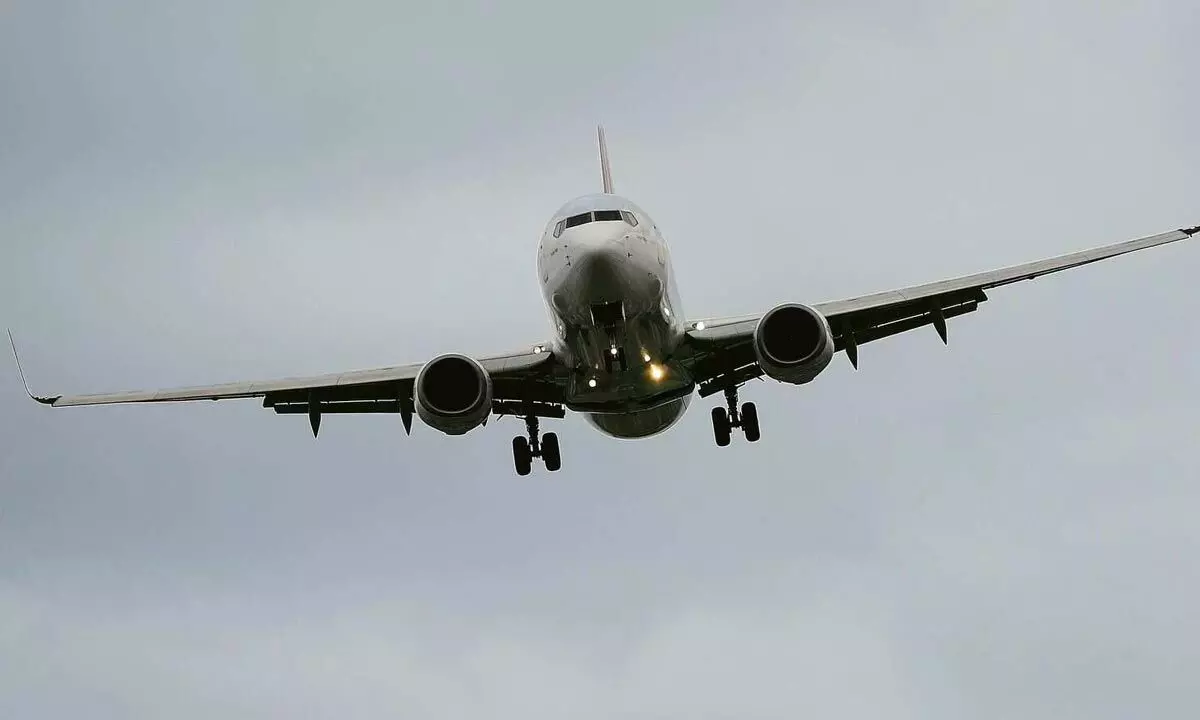When will aviation sector take off again?
The ghosts of Covid-19, Omicron and the Russian Ukraine war still loom in the background
image for illustrative purpose

From 3,00,000 flights a year or 10,000 flights a day can global aviation reach these figures of 2019. According to reports they are just 11 per cent short. The ghosts of Covid-19, Omicron and the Russian Ukraine war still loom in the background.
China, Russia and the US have been shielded by the domestic passenger market travelling within the country. Europe has had to struggle and Asia-Pacific region has been hit the hardest. The UN predicts that by 2050 two-thirds of the world population will live in cities. How can we adapt and enhance today's already-stretched mobility system for it to respond to our expectations and increased demands? How can mobility be reinvigorated for it to be sustainable and support the 2030 Agenda of Sustainable Development and its 17 Sustainable Development Goals (SDGs)?
In a little over a century, our industry has gone from learning to fly, to learning to fly faster, learning to fly further, learning to fly heavier planes, and now to having 1,00,000 plus commercial flights occurring around the world each and every day – representing over 400 departures per hour! Aviation has truly has been at the forefront of innovation to become one of the safest and most reliable modes of transportation in the world today.
The volume of air traffic is surprising to some. Aircraft are taking off around the world at a rate of over 400 departures per hour – and that's only scheduled commercial traffic.
Air transport takes people and cargo around the world, and like bees pollinating the world economy, air transport can have a tremendous impact on the social and economic development and sustainability of a region.
This indicates the significant economic impact of aviation on the world economy, which is also demonstrated by the fact that aviation represents 3.5 per cent of the gross domestic product (GDP) worldwide (2.7 trillion US dollars) and has created 65 million jobs globally. Aviation provides the only rapid worldwide transportation network, generating economic growth, creating jobs, and facilitating international trade and tourism.
Aviation has become the enabler of global business and is now also being recognized by the international community as an essential enabler to achieving the UN Sustainable Development Goals. The aviation sector is growing fast and will continue to grow. The most recent estimates suggest that demand for air transport will increase by an average of 4.3 per cent per annum over the next 20 years.
If this growth path is achieved by 2036 the air transport industry will then contribute 15.5 million in direct jobs and $1.5 trillion of GDP to the world economy. Once the impacts of global tourism are taken into account, these numbers could rise to 97.8 million jobs and $5.7 trillion in GDP.
As the industry plans to support a near doubling of passenger and cargo numbers by 2036, demand for pilots, engineers, air traffic controllers and other aviation-related jobs is expected to rise dramatically. What is also certain is that innovations in technology and approaches will be needed to sustain this growth. World wide – 51 per cent of the population lives within 100 km of an International Airport – and 74 per cent live within 100 km of any kind of airport. So airspace is quickly becoming congested and air traffic is slated to double over the next two decades.
In addition to air space – we have to consider airports themselves. Airports are already built up around population centres and are already operating at high capacity.
The reality is that – in order to accommodate the forecast growth - drastic improvements and efficiencies for airports and air traffic management will need to be found. Aviation is already known as a driving force of global technology development and innovations.
Engines and aircraft become lighter, quieter and more efficient. Emerging technologies are reshaping with robotics, artificial intelligence, the internet of things, unmanned aircraft systems and the push for hybrid and electric airplanes – just to name a few. Alternative fuels can significantly change the current scenario of aviation in support of the environmental protection. The vast investment in Artificial Intelligence (AI) and Big Data could be seen as a promising way of increasing safety, efficiency and sustainability. These technologies can help improve aviation infrastructure and airspace utilization.
And aviation is now going beyond mobility between continents and cities – it is starting to impact mobility within cities. These innovations relate primarily to moving goods for now – but they will quickly become viable for moving people as well.

